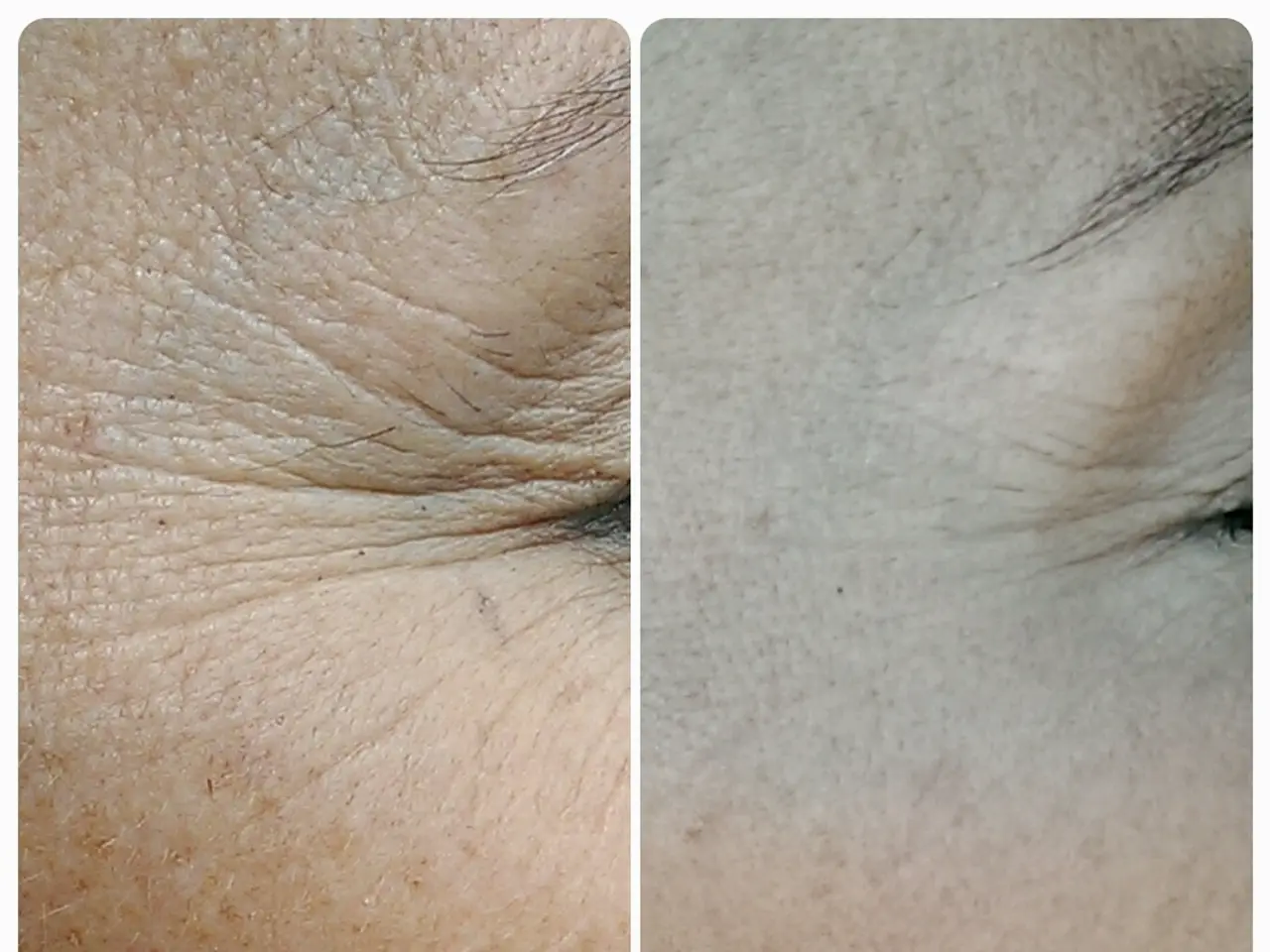VLDL Cholesterol: Potential Risks, Ideal Levels, Treatment Options, and Further Insights
Lowering VLDL Cholesterol: A Guide to Healthy Living
High cholesterol levels often go unnoticed as they do not cause any symptoms. A lipid profile test, therefore, is essential to determine cholesterol levels and prevent potential health issues.
The test measures total cholesterol, high-density lipoprotein (HDL), and low-density lipoprotein (LDL), often referred to as "good" and "bad" cholesterol, respectively. VLDL, a type of lipoprotein cholesterol made by the liver, is not directly measured in this test but can be estimated from the triglyceride value.
VLDL carries triglycerides, a type of fat, to the body's cells. High levels of VLDL can contribute to atherosclerosis, a process where plaque builds up in the arteries, making them narrower and potentially leading to heart disease or stroke.
To lower VLDL cholesterol, lifestyle changes play a crucial role. Regular aerobic exercise, such as walking, cycling, or swimming for at least 30 minutes most days of the week, helps burn triglycerides and lower VLDL. Losing weight, even a modest 5–10% reduction, can significantly reduce triglycerides and VLDL levels.
Reducing or eliminating alcohol consumption, quitting smoking, and adopting a heart-healthy diet are also effective strategies. The diet should replace saturated and trans fats with monounsaturated and polyunsaturated fats and increase soluble fiber intake.
When lifestyle modifications are insufficient or if cardiovascular risk is high, doctors may prescribe medications such as fibrates, statins, niacin, prescription-strength omega-3 fatty acids, and others. These drugs target triglycerides and VLDL levels directly.
Regular monitoring and medical consultation are important to tailor treatment and ensure effectiveness and safety. Most adults should have a regular medical exam every 4-6 years, during which a lipid profile test will be performed to check cholesterol levels.
In summary, the most effective ways to lower VLDL cholesterol combine consistent aerobic exercise, weight management, avoiding alcohol and smoking, dietary changes to reduce unhealthy fats and increase fiber, and when appropriate, medication targeting triglycerides and VLDL levels directly. A heart-healthy diet includes lots of fruits and vegetables, whole grains, low-fat or fat-free dairy products, poultry, fish, and nuts. Remember, prevention is better than cure, so make healthy living a priority!
References:
- American Heart Association. (2020). Diet and lifestyle recommendations. Retrieved from https://www.heart.org/en/healthy-living/healthy-eating/eat-smart/nutrition-basics/aha-diet-and-lifestyle-recommendations
- National Heart, Lung, and Blood Institute. (2020). Lowering cholesterol with lifestyle changes. Retrieved from https://www.nhlbi.nih.gov/health-topics/lowering-your-cholesterol-with-lifestyle-changes
- American Association for Clinical Chemistry. (2020). Normal values for lipid profile tests. Retrieved from https://www.aacc.org/resources/clinical-laboratory-resources/laboratory-reference-ranges
- Mayo Clinic. (2020). Cholesterol-lowering medications. Retrieved from https://www.mayoclinic.org/diseases-conditions/high-blood-cholesterol/in-depth/cholesterol-medications/art-20046368
- Personas seeking to lower their VLDL cholesterol levels can benefit from adopting a heart-healthy diet, which includes reducing saturated and trans fats in favor of monounsaturated and polyunsaturated fats, and increasing soluble fiber intake.
- Regular aerobic exercise, such as walking, cycling, or swimming for at least 30 minutes most days of the week, can help lower VLDL cholesterol by burning triglycerides, a type of fat carried by VLDL.
- Medical science shows that quitting smoking and reducing alcohol consumption are effective strategies for lowering VLDL cholesterol levels and improving cardiovascular health.
- Addressing medical-conditions like obesity and high cholesterol is essential for maintaining health-and-wellness, with weight management strategies like losing even a modest 5–10% of one's body weight being beneficial for reducing triglycerides and VLDL cholesterol.
- Lifestyle changes may not always be enough to manage high VLDL cholesterol levels, in which case seeking medical advice to explore the use of medications such as fibrates, statins, niacin, and prescription-strength omega-3 fatty acids may be necessary.




